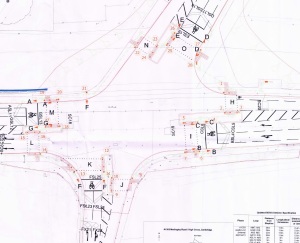A brief, personal, response to the Cambridge Cycling Campaign Hustings. The full hustings can be viewed below, as filmed by Richard Taylor.
The hustings included 4 of Cambridge’s parliamentary candidates:
Rupert Read (Green)
Chamali Fernando (Conservative)
Julian Huppert (Liberal Democrat)
Daniel Zeichner (Labour)
5th candidate, Patrick O’Flynn (UKIP), was invited but declined to attend.
There isn’t a lot of headline difference between the candidates at the hustings. They all describe themselves as pro-cycling, they all say that their parties will fund cycling. There probably aren’t many places in the country that would get this top-level consensus, but then in no other place in the country do the majority of adults cycle.
But it is quite out-of-step with their parties. None of the major parties have cycling as a top-10 issue, looking at their national websites. Even the Greens, who do headline transport, put a focus on buses before walking and cycling. With only 2% cycling modal share nationwide, it is not a surprise that this isn’t an issue for most voters.
While most voters will make their choice of transport based on things such as cost, convenience, safety, it is the role of an MP to look beyond that to the wider impact. To look at spiralling NHS costs due to inactivity, to look at urban air and noise pollution making people sick, to look at the economic cost of congestion, the social and economic limitations placed upon those who can’t drive, to look at the global impact of climate change. Just because it’s not a voter issue, doesn’t mean it’s not important.
Without party focus, the only way that any MP will achieve anything on cycling is because they, personally, push it forward and make it a priority.
Lacking fundamental disagreement on whether cycling was a Good Thing, each candidate, broadly speaking, fell back on the major themes of their campaign.
Read pushed the Green ideology, the strength of his belief and green priorities on spending on sustainable transport rather than cars.
Fernando pushed the economic responsibility of the Conservatives which will provide funding for cycling, and the record of the government in spending on Cycle City Ambition in the past 5 years.
Huppert, as the incumbent, pushed his personal record as a Lib Dem in government, his amendment to the Infrastructure Bill which puts a binding requirement on government for a national walking and cycling strategy.
Zeichner asserted a strong voice in the next government, and Labour top-down centralisation to impose standards on cycle infrastructure.
This one is Huppert’s to lose. He was co-chair of the All Party Parliamentary Cycling Group, which raised the Get Britain Cycling debate in Parliament. He successfully amended the Infrastructure bill. We know that cycling is one of his issues should he be re-elected, and the other candidates have not had an opportunity to demonstrate this. But it is also clear from Huppert’s level of detail that he knows about cycling: not just why it is important, but what are the current thoughts in campaigning and what are the priorities. When, as a cycle campaigner, I hear him talk about something related to my area of expertise that I hadn’t thought about before it’s hard not to be impressed.
But all the candidates have the fundamentals correct: the importance of continuous funding, the importance of infrastructure, the issue of standards. Specifics can be improved by further reading later. The question is, once elected, will they take the opportunity to actually make a difference to cycling, not just for Cambridge, but for those places where no-one currently cycles?
And let us take a moment to revel in a discussion between 4 parliamentary candidates in the UK, and not a single mention of helmets, hi vis, registration or insurance.
They might not have survived the audience if they had, but still.
This is only one issue on which to decide a vote. Further opportunities to see the candidates speak on other subjects are listed over on the Cambridge News site.
Also, I was on Cambridge local radio yesterday talking about the election and cycling.

